
Hello NNA2 Friends!
You know we love our audience, and that’s why we have taken the kind, generous, intelligent, responsible step of canceling everything!!!
In the meantime, stay home and join us in the FLATTEN THE CURVE CHALLENGE!
To satisfy your NNA2 content cravings, head on over to AADL.org/nerdnite and enjoy videos of NNA2s past!
Now everyone go wash your hands!

If, like most people, your New Year’s resolution is to go out to a local drinking establishment at least once per month and, while there, learn about a variety of interesting topics with a group of equally-interested and interesting people, then NERD NITE A2 IS THE PLACE FOR YOU!
In our lineup this month, we’ll learn how microRNAs can help pinpoint the presence of disease without requiring painful medical tests. Automotive engineer Sagar Kamat will explain what makes your car interface “click” – offering a window into the process of designing the knobs and switches we encounter every day. Local street artist David Zinn will discuss his chalk art, outdoors as his medium, and why he doesn’t fear the rain. You don’t want to miss this month, so grab a friend, grab a seat, and join us for NNA2 #71!!
When: Thursday, 1/17/20
Doors at 6:30/talks at 7 pm
Where: LIVE, 102 S. First St
Cost: Zero dollars, friends, so come on out!
Quicker, more accurate detection of microRNAs for diseases
MicroRNAs have the potential to disease biomarkers that can serve their purpose without the need of invasive, painful tests. My technique serves to be a quicker, more effective way of detecting them.
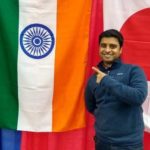 The Science of Switch Feel – What makes a switch click-ass – Sagar Kamat
The Science of Switch Feel – What makes a switch click-ass – Sagar Kamat
Push buttons, knobs, touchscreens…Every day, we interact with hundreds of different switches around us, to do everything from prepare our coffee, type out our emails, turn ON the lights, drive our cars and everything in between. But have you ever paused to think about what goes into designing each of those micro-experiences? Have you thought about makes them all feel a certain way? How do you quantify and specify ‘feel’? Join me to learn about what makes our world click.
About Sagar: Sagar is an Automotive engineer by the day, where he helps craft the next generation of automotive user interfaces, and an all-out nerd by night, susceptible to frequent trips down the black hole of the internet reading about the vaguest of topics. Currently going through a podcast phase, he finds it difficult to carry on a conversation without, at least once, saying ‘Have you heard this podcast…..” . You can read his blog at sagarkamat.com or find him on Twitter at @sagarkamat.
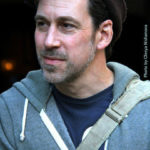 How to avoid Making Art while still being an artist – David Zinn
How to avoid Making Art while still being an artist – David Zinn
While drawing in public, I have had countless conversations with random strangers about Art and being an artist, and mostly about how almost everybody thinks they aren’t one and can’t make any. I will endeavor to prove that everyone in the room was or is an artist, I will explain how my father’s desire for peace & quiet in restaurants defused my own Fear of the Blank Canvas, and I will answer the eternal question asked of every sidewalk artist: “But won’t you be sad when it rains?”
About David: David Zinn is a life-long A2 townie, an alumnus of the U-M Residential College, and a former freelance commercial artist who currently makes his living by drawing on sidewalks with chalk. He is as surprised by this as you are. Follow him on Twitter @davidzinn_art.

Hello NNA2 family! Gather ’round for our next event in which physics grad student Taylor Baildon dives into humanity’s first glimpse of the universe. Biology PhD student and RELATE member Fatima Javed will introduce us to neutrophils, the cells that initiate the healing process within our bodies. Engineer/amateur historian Andrew Huster will mark the 30th anniversary of the demise of the Berlin Wall with a look at Germany’s “edifice of fear.” But we’re not afraid! So come on out and learn something eye-opening, old or neu(trophil) from this great lineup! Bring a friend, grab a drink, and sit back for another great Nerd Nite A2!
When: Thursday, 10/17/19
Doors at 6:30/talks at 7 pm
Where: LIVE, 102 S. First St
Cost: No cover charge, AADL’s got this!
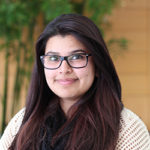 Understanding Our Bodies First Responders
Understanding Our Bodies First Responders
Have you ever gotten a paper cut Or injured yourself while cooking, biking etc.? Our normal response to this injury is clean the wound and put a band-aid on to prevent infection. And then in a couple days, our body will heal itself. Ever wondered what happens inside your body when you injure yourself? Well, in this talk you will learn about the specialized cells, called neutrophils, that help start the healing process when you injure yourself.
About Fatima: I am a third year PhD. Candidate at the University of Michigan in the department of Cell and Developmental Biology. My work focuses on understanding the inner workings of our body’s first responding cells, called Neutrophils. I love research and talking to people about science. But when I am not in lab, I enjoy watching TV, reading fiction novels and cuddling with my cat. Follow Fatima @javedfatima2.
 Lies, Ideologies, and Technicalities: The History of the Berlin Wall
Lies, Ideologies, and Technicalities: The History of the Berlin Wall
The Berlin Wall stood for twenty-eight years as the stark manifestation of the division between east and west. On the eve of the 30th anniversary of its fall, we’ll take a look back into the history of this “edifice of fear”: how and why it came about, how it remained, its effects on the city and the world, its astonishingly sudden demise, and what has happened since it came down.
About Andrew: Andrew is an electrical engineer by day. By night, he indulges in various eclectic interests, one of which is twentieth-century history. For his day job, he writes code that makes cars drive themselves. He maintains a list of cool band names at http://magitronix.com. You can follow him on Twitter at @ahuster.
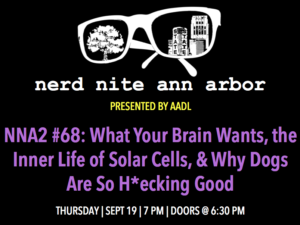
What’s brighter than the sun? What’s more complex than the brain?? What’s gooder than a doggo??? NOTHING, that’s what? But ALSO nothing brings them all together quite like Nerd Nite A2!! U-M chemistry grad student Emily Mueller will explain one weird trick to make solar cells last longer. U-M psychology PhD candidate Erin Naffziger will explain how your brain processes craving and desire. Laura Witkowski and Jane Wolff, owners of Good Wolff Dog Training, will talk dog behavior and training. Join us for good times and good company! Bring a friend, grab a drink, and sit back for another great Nerd Nite A2!
When: Thursday, 9/19/19
Doors at 6:30/talks at 7 pm
Where: LIVE, 102 S. First St
Cost: No charge, Ann Arbor District Library’s got this one covered!
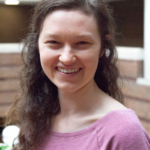 Emily Mueller – A Marvelous Mix: how a key ingredient makes solar cells last longer!
Emily Mueller – A Marvelous Mix: how a key ingredient makes solar cells last longer!
Solar cells help us get energy from the sun, which is a renewable energy source, instead of fossil fuels, which are a finite energy source. But did you know that there is a type of solar cell that can bend? That can be transparent? That could be rolled up and stored in your pocket? These devices are called “plastic solar cells” because they are made with materials similar to plastics. In this talk you’ll learn about how these unique solar cells convert sunlight into electricity. You’ll also discover that these solar cells have a dark side: they wear out quickly (after ~ 2 years)! The reason for this is that there are two ingredients in the solar cell that need to be mixed together for it to function best, but these ingredients separate over time (like oil and water). I add a polymer (a big molecule) to the solar cells that helps the two cell ingredients stay mixed together and makes the solar cells last longer!
About Emily:
I am a 4th year Ph.D. student in the Chemistry department at UM where I make and study polymers for solar cells. I suspect that I may be solar powered myself because I feel best when I am outdoors (swimming, hiking, biking)! I also enjoy reading anything I can get my hands on, cooking things from scratch, and making music.
 Erin Naffziger – The brain ‘wants’ what the brain wants
Erin Naffziger – The brain ‘wants’ what the brain wants
Over the course of evolution our brains have become excellent at detecting rewards (e.g. food or a potential mate) in our environment and in turn generating motivation to obtain that reward. While this system was originally necessary for survival, it can easily become maladaptive in a world where access to rewards (such as high-calorie food, drugs and alcohol, gambling) are present in abundance. Unfortunately, this reward detection system can become hypersentitive in some individuals, in turn causing excessive desire and craving each time they come across a reward cue in their world. In this talk we will address how and why this reward system can become dysregulated in some individuals. Answering these questions will help scientists discover new treatment options for individuals living with addiction or psychiatric disorder.
About Erin:
Erin is a PhD Candidate in Biopsychology at the University of Michigan studying how the brain creates the psychological processes: desire and craving. She wants to know how motivation is generated in the brain and how it may become dysregulated in mental illnesses. When she’s not playing with rats or using lasers to activate the brain, she enjoys true crime podcasts and hanging out with her elderly cat.
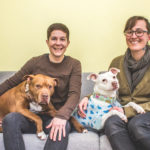 Jane Wolff and Laura Witkowski – Way More Carrot, A Lot Less Stick: How to REALLY be your dog’s best friend
Jane Wolff and Laura Witkowski – Way More Carrot, A Lot Less Stick: How to REALLY be your dog’s best friend
“What is my dog thinking?” There’s a lot of misinformation, pernicious myths, and general confusion about how to train dogs. Understanding how dogs process the barrage of information in their environment is the first step in separating the good from the bad when it comes to dog behavior. We will talk about the two ways dogs learn and how to harness that knowledge to get more of the behaviors you like and less of the ones you don’t – without ever hurting or scaring your dog.
About Jane and Laura:
Jane and Laura of Good Wolff Training are both Certified Professional Dog Trainers and graduates of the highly regarded Academy of Dog Trainers. They use humane, field-tested, science-based methods for dog training and behavior modification. Laura and Jane love working with shelter dogs, teaching group training classes, and helping owners better understand dog behavior and better enjoy life with them. Jane also specializes in separation anxiety and is a Certified Separation Anxiety trainer. Laura is a stand up comedian and has a way of bringing humor and levity to challenging behavior problems. Find them on Instagram @goodwolfftraining.

Another Nerd Nite A2 is coming your way! This one features U-M PhD candidate in biopsychology Sofia Carrera explaining how neurotransmitters affect our behavior and feelings, U-M engineering PhD candidate Ben Swerdlow discussing the moral quandaries that may occur when algorithims are applied to the sheer quantity of personal data that is collected, and Ryan Tamaroff walks us through the history of comic books.
When: Thursday, 8/15/19
Doors at 6:30/talks at 7 pm
Where: LIVE, 102 S. First St
Cost: This one’s on your friendly neighborhood Ann Arbor District Library!!

It’s an all-star, all-SPACE lineup for this round of NNA2, friends! In honor of the 50th anniversary of the moon landing, we are exploring the final frontier with three amazing talks!
Electrical engineer Jordan Budhu will walk us through the communication tools used by exploration rovers to beam their findings back to Earth’s eager audiences. Space enthusiast Sam Carpenter will be telling the story of NASA’s Apollo missions. Astronomy PhD candidate Larissa Markwardt will outline the search for as-as undiscovered planets lurking at the edges of our solar system.
It’s going to have SCIENCE! It’s going to have HISTORY! It’s going to be STAR*-STUDDED! (*As in, you know, gas balls.) It’s going to be fun and interesting and eye-opening and great so text a friend now and tell them you’ll see them there!
When: Thursday, 7/18/19
Doors at 6:30/talks at 7 pm
Where: LIVE, 102 S. First St
Cost: Free! With love, from your friends at the Ann Arbor District Library!
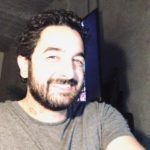 Jordan Budhu – Talking to Other Planets: Antennas for Satellites and Planetary Exploration Rovers
Jordan Budhu – Talking to Other Planets: Antennas for Satellites and Planetary Exploration Rovers
Billions of dollars are spent on developing spacecraft and planetary exploration rovers to probe the universe or visit other planets, however, the most important component on these spacecraft is the communications antenna. This talk will explore the concept of electromagnetic radiation and the fundamental working principles of antennas. Then we will discuss some designs for planetary exploration rovers and satellite spacecraft. The listener will leave with an understanding of how an antenna radiates and how we use them to communicate with space-borne instruments.
About Jordan:
He received his M.S. degree in electrical engineering from the California State University, Northridge, California, USA, in 2010, and the Ph.D. degree in electrical engineering from the University of California, Los Angeles, California, USA, in 2018. He is currently a Research Fellow in the Radiation Laboratory at the University of Michigan, Ann Arbor, Michigan, USA. In 2011 and 2012, he was a Graduate Student Intern at the NASA Jet Propulsion Laboratory. In 2017, he was named a Teaching Fellow at the University of California, Los Angeles. His research interests are in antenna theory, computational electromagnetics algorithms, and scattering from inhomogeneous, anisotropic materials. Dr. Budhu’s awards and honors include the 2010 Eugene Cota Robles Fellowship from UCLA, the 2012 Best Poster award at the IEEE Coastal Los Angeles Class-Tech Annual Meeting, the 2018 Henry Samueli School of Engineering and Applied Science Excellence in Teaching Award at UCLA, and the first place award for the 2019 USNC-URSI Ernst K. Smith Student Paper Competition at the 2019 Boulder National Radio Science Meeting.
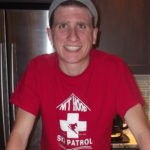 Samuel Carpenter – Making the Impossible Possible: Lessons from Apollo
Samuel Carpenter – Making the Impossible Possible: Lessons from Apollo
In 1962 under President Kennedy’s direction, our nation committed itself to “landing a man on the moon and returning him safely to earth.” At the time, this goal was physically impossible. In order to accomplish this goal, it had to be broken down into component tasks. Accomplishing these tasks determined the mission objectives of the Mercury, Gemini and Apollo programs. I will discuss not only the accomplishments these early space exploration efforts but I will also outline a general process of how to take on impossible goals. You will be able to apply this process in your own lives in order to achieve your ‘impossible’, whatever that happens to be.
About Samuel:
Samuel is a Pennsylvania native who recently relocated to Ann Arbor from Portland, OR. Throughout a career in academic research and volunteering as a prehospital medical provider, he has maintained an avid interest in space exploration history as well as current progress of existing space programs. Find him on Twitter @carpensa1.
 Larissa Markwardt – Hidden Planets
Larissa Markwardt – Hidden Planets
Could there be a planet lurking at the edge of our Solar System that we haven’t discovered yet? Maybe! It’s happened before. In this talk, I will explain how the orbits of objects we already know about in our Solar System can be used to infer the existence of yet unseen planets. I will also discuss the history and science of the discoveries of Neptune and Pluto, searches for other hypothetical planets (Planet X and Vulcan), and the current hunt for Planet 9.
About Larissa:
Larissa is a PhD candidate in Astronomy and Astrophysics and NSF graduate research fellow at the University of Michigan. She studies tiny, faint, and distant space rocks in our Solar System, specifically Earth Trojans and Kuiper Belt Objects. In her free time she likes to go hiking and kayaking, play board games, and watch Stargate. Find her on Twitter @LarMarStar.
 And we’re back! June’s Nerd Nite A2 has it all – little-known language facts, a battle for the GREATEST Lake (water quality issue), and a deep, objective examination of why cats are, scientifically, just the best.
And we’re back! June’s Nerd Nite A2 has it all – little-known language facts, a battle for the GREATEST Lake (water quality issue), and a deep, objective examination of why cats are, scientifically, just the best.
Linguist and standup comedian Emily Rae Sabo will teach us 10 things we need to know about language, including why English spelling is so W-E-I-R-D. Research technician Christine Kitchens will break down the water quality issues plaguing two of the Great Lakes, specifically, too much algae and not enough algae. Cat lover Jessica Amey will discuss feline domestication, variances by breed, and anatomical traits, such as relative cuteness of kitty toe beans.
Join us to laugh at language, marvel at lake ecosystems, and celebrate cats just being cute and great all the time, scientifically speaking, of course. Bring a friend, grab a beer, and settle in for another great NNA2!
When: Thursday, 6/20/19
Doors at 6:30/talks at 7 pm
Where: LIVE, 102 S. First St
Cost: Free! This night out is sponsored by the Ann Arbor District Library!
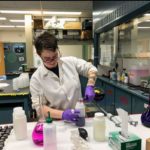 Christine Kitchens: A Tale of Two Lakes: Eutrophy in Western Lake Erie and Oligotrophy in Lake Michigan
Christine Kitchens: A Tale of Two Lakes: Eutrophy in Western Lake Erie and Oligotrophy in Lake Michigan
In Western Lake Erie, massive mats of blue-green algae blossom every summer, stirring up memories of the 2014 Toledo Water Crisis with every reappearance. Meanwhile, in Lake Michigan, there are nearly as many invasive mussels in the lake as there are gallons of water. Each mussel is the size of a thumbnail and, under the right conditions, their combined force can filter the entire volume of water in Lake Michigan in less than a week. The resulting crystal clear waters are great for beachgoers but extremely problematic for the lake ecosystem. In this talk, we’ll discuss some of the causes of eutrophy (too much vegetation) in Western Lake Erie and oligotrophy (too little vegetation) in Lake Michigan and how lake-wide management strategies for one problem can exacerbate another.
About Christine:
Christine Kitchens is a research technician at the Cooperative Institute for Great Lakes Research at the University of Michigan. She graduated with a B.S. in Environmental Science from North Carolina State University and an M.S. in Conservation Ecology from the University of Michigan. While she performs a variety of tasks at the cooperative institute, she primarily spends her days helping monitor and understand harmful algal blooms in Western Lake Erie and Saginaw Bay, Lake Huron. When she does manage to find some free time, she spends it running around doing more volunteering with the Huron River Watershed Council and other various local environmental organizations, playing video/board games, and basically being a massive nerd in all facets of life.
 Emily Rae Sabo – 10 Things you Need to Know about Language
Emily Rae Sabo – 10 Things you Need to Know about Language
You speak a language, so you know everything about how language works, right? Wrong! In this talk, we’ll cover the Top 10 things most people don’t know about language. In doing so, I’ll dispel several common myths and reveal some fascinating facts about the systems we use every day to communicate with each other. If you’ve ever wondered how many languages there are in the world, why language death is on the rise, where grammar comes from, or how it is that kids learn language so effortlessly – this talk is for you! Or, if you simply find yourself in need of a few high-quality conversation starters for your upcoming work party, this talk will prepare you to explain what exactly the Bilingual Advantage is, why British accents sound smart, how whistled languages work, whether Spanglish is a language, which high-profile court case was a glaring example of linguistic discrimination, and why English spelling is such a mess.
About Emily:
By day, I’m a researcher and PhD student of Linguistics at The University of Michigan. By night, I’m a local standup comedian at dive bars near you. In my work as a linguist, I compare how monolingual and bilingual listeners respond to various types of lexical ambiguity and speech errors in order to investigate the cognitive mechanisms that underlie language processing as well as the social priming that modulates how people perceive Spanish-accented English in the U.S. today.
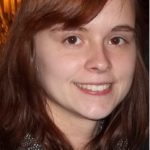 Jessica Amey – Cats: A look into the feisty feline
Jessica Amey – Cats: A look into the feisty feline
We’ll take a look into domestication of cats, cultural influences and a few cat anatomy characteristics. There will also be interactive trivia on different cat breeds.
About Jessica:
Jessica loves cats and will have prizes for cat trivia winners.
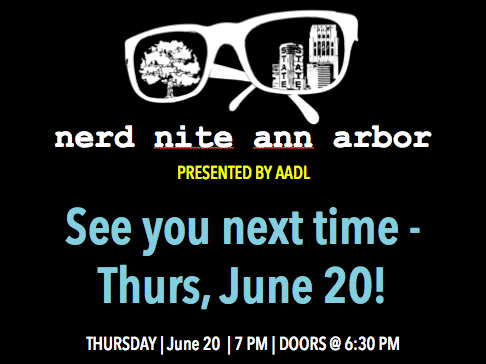
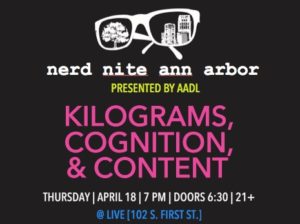 It’s going to hard to MEASURE how much INTELLIGENCE (artificial and otherwise) and DATA are coming together to make April’s NNA2 great!
It’s going to hard to MEASURE how much INTELLIGENCE (artificial and otherwise) and DATA are coming together to make April’s NNA2 great!
We’ll have NSF calibration officer Heather Wade with the tale of the kilogram standard and its recent reconfiguration. U-M Ph.D. candidates Steven Jones and Bryan Stearns will outline the role cognitive architecture plays in artificial intelligence. RELATE alum and Ph.D. candidate Ben Swerdlow will discuss the intersection of Big Data and ethics. This month’s NNA2 will amaze, inform, and entertain, so invite a friend, grab a drink, and find a seat for another excellent NNA2!
When: Thursday, 4/18/19
Doors at 6:30/talks at 7 pm
Where: LIVE, 102 S. First St
Cost: Free! This night out is sponsored by the Ann Arbor District Library!
 Ben Swerdlow – The Medium Place: Big Data and Ethics
Ben Swerdlow – The Medium Place: Big Data and Ethics
We deal with big data every day through social media, advertisements, digital assistants, and more. However, big data is also used in finance, health care, and criminal justice to make choices that impact many, but often behind the scenes. In this talk, I will go over how algorithms learn from data, how this process can unintentionally go wrong, and what ethical questions arise when they do. These questions will not be settled by the end of the talk, but in discussing them I hope we can learn to think more critically about the data-fueled world around us.
About Ben:
Ben is a Ph.D. candidate at the University of Michigan studying materials science and engineering through computer simulations of self-assembling nanoparticles. As part of his studies, he learned about the predictive power of data science as well as the ethical considerations presented at this talk. When not thinking about materials science or big data, you can find him watching YouTube videos, playing board or video games with friends, or cooking.
Steven Jones and Bryan Stearns – The Cogs of Cognition

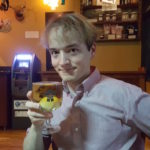 Human thinking can do some amazing things – sometimes! And sometimes our thinking doesn’t work out so well. Either way, thinking seems to happen very fast and seems to use a fixed set of components. How do we do it? Sure, we (humans) do thinking with neurons, but our talk will focus on describing some high-level systems that describe how the brain works, and which we can use to simulate (sometimes intelligent!) human behavior.
Human thinking can do some amazing things – sometimes! And sometimes our thinking doesn’t work out so well. Either way, thinking seems to happen very fast and seems to use a fixed set of components. How do we do it? Sure, we (humans) do thinking with neurons, but our talk will focus on describing some high-level systems that describe how the brain works, and which we can use to simulate (sometimes intelligent!) human behavior.
About Steven and Bryan:
Steven and Bryan are both Ph.D. candidates at the University of Michigan researching cognitive architectures. Bryan studies the computational principles of skill representation and learning. In his spare time, he likes reading, videography, theology, learning new skills, and singing when no one is listening. Steven studies how we record and use long-term memories. He enjoys video games, board games, and dystopic settings.
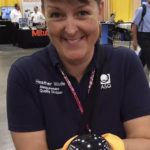 Heather Wade – The Life and Death and Life of the Kilogram
Heather Wade – The Life and Death and Life of the Kilogram
The kilogram was the last remaining human-made physical base measurement artifact and which served as the base measurement of mass. It has been redefined based on unchanging natural physical constants. So, like the second, the meter, the ampere, the Kelvin, the candela, and the mol, it can be created and proven anywhere and the value won’t change. Come and learn about the new kilogram and how it’s defined.
About Heather:
Heather is proud to be a big nerd. She holds a BS in Biology from the University of Michigan. She has worked as a microbiologist, an extraction and analytical chemist, a physical test engineer, and a water treatment specialist before finding her way into the field of metrology. She is currently Calibration Officer at NSF International, in Ann Arbor, MI; an independent, not-for-profit and non-governmental organization committed to protecting public health and safety worldwide. She has experience in chemical, mass, dimensional, time, electrical, pressure, flow, temperature, and luminous intensity calibrations. She is responsible for supporting all of the test equipment, developing and validating calibration methods, ensuring staff competency, and developing uncertainty budgets. Heather holds ASQ-CCT (Certified Calibration Technician) certification and has been a leader and subject matter expert for the ongoing development of the ASQ-CCT exam. She is currently Treasurer and a past Chair of ASQ Measurement Quality Division (MQD). She’s published in several nerdy publications, including in ASQ-MQD’s “The Standard” and in Cal Lab Magazine; The International Journal of Metrology. Heather is one of the co-authors of The Metrology Handbook, 2nd Ed., edited by Jay Bucher. To further her “nerd-cred”, she is also featured in the Cool Careers in Metrology DVD and website. She has presented papers at Measurement Science Conference, NCSL International Conference, the 21st Asia-Pacific Quality Conference, 2014 China Conference on Quality, and the 10th Shanghai International Symposium on Quality. She is an active member of NCSLI’s Testing Lab committee and Test Equipment Asset Management committee and its subcommittee on Delay Dating. She is also a previous speaker at Ann Arbor’s Nerd Nite.
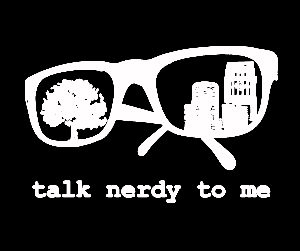
NNA2 is dishing up another informally informative evening and we want YOU to join us! Our menu features specials including mathematics Ph.D. student Jasmine Powell exposing the freakiness of fractals and their never-ending patterns, astronomy Ph.D. student Gillen Brown explaining how stars blew up a million years ago and landed all over our periodic table, and evolutionary biologist and virologist Kayla Peck shares Louis Pasteur’s legacy through crystals, milk, and rabies. Pull up a chair and enjoy!
When: Thursday, 3/21/19
Doors at 6:30/talks at 7 pm
Where: LIVE, 102 S. First St
Cost: Free! This night out is sponsored by the Ann Arbor District Library!
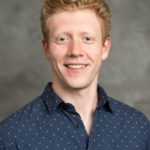 Gillen Brown – Origin of the Elements
Gillen Brown – Origin of the Elements
Just after the Big Bang, hydrogen and helium were the only elements in the universe. 14 billion years later, we have everything from argon to zinc. The story of how the elements were made includes the beginning of the universe itself, the death throes of stars like our sun, and at least three types of exploding stars. I’ll cover the handful of ways the universe builds elements, then walk through the periodic table to show where each element comes from.
About Gillen:
Gillen is a Ph.D. student in the astronomy department at the University of Michigan, where he studies how elements are distributed within galaxies by using computer simulations. When not writing code, he enjoys watching sports, camping throughout the beautiful state of Michigan, and riding roller coasters.
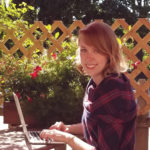 Jasmine Powell – Funky Fractals
Jasmine Powell – Funky Fractals
While the spotlight on math often takes the form of its many direct applications to problems in other fields, there’s another, quieter side of math lurking in the background: understanding and solving problems arising not from any real-world issues, but instead from abstract patterns. Throughout this talk, we’ll delve into my own research on this side of things, and in the process will discover a collection of intricate, beautiful, surprising abstract shapes called fractals. Through talking about what I do and why I love it, I’ll touch on questions about what “pure math research” looks like and why it’s not as intimidating as it sounds.
About Jasmine:
Jasmine is a Ph.D. candidate in mathematics at the University of Michigan and a native Ann Arborite. She loves thinking about math: how to learn it, how to teach it, and how to extract its intrinsic beauty. When she’s not at a local coffee shop working on research, you can find her playing board games, doing an escape room, or embarking on her quest to eat at every restaurant in Ann Arbor.
 Kayla Peck – Crystals, Milk, and Rabies: LP’s legacy
Kayla Peck – Crystals, Milk, and Rabies: LP’s legacy
French scientist Louis Pasteur left his mark on science in a bunch of weird ways. Let’s explore them together!
About Kayla:
Kayla first became an LP fangirl sometime in 2007 during Organic Chemistry I. Coincidentally, her career path also resulted in the study of deadly pathogens. She earned her PhD in Biology in 2016 and is primarily interested in virus evolution and how viruses emerge into humans. When not in lab, she can be found catching pokemon, reading medieval fantasy, playing scrabble, or coming up with new Shrek drinking game rules.





























